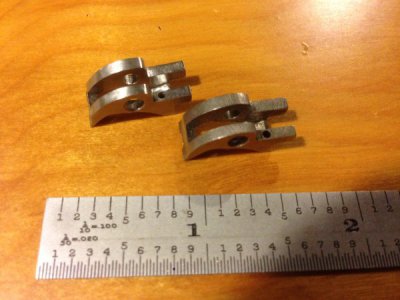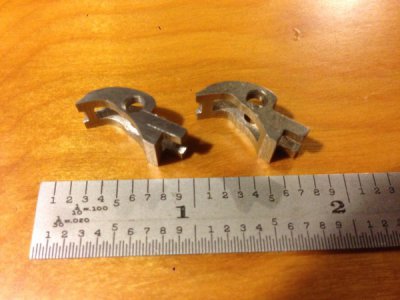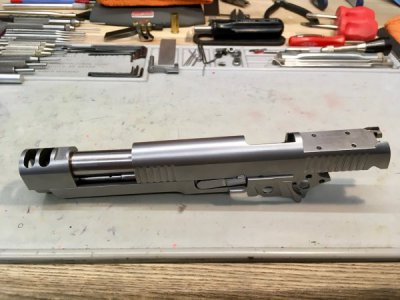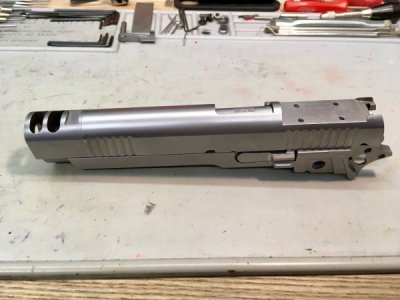Here ya go mikey:
This is the underside of a 1911 barrel. The two 'hooks' are one of the registration points when the slide/barrel/frame go into battery/lockup. The barrel is held vertically by these two hooks resting on the slidestop pin, and the inside of the top of the slide.
Too little clearance between these lower hooks and the slidestop pin will not allow the slide and barrel to finish going to battery (firing position). Too much clearance and the barrel can 'float' vertically between the inside of the slide and the slidestop pin. This is very bad for accuracy.
In the picture here, I have filed as precisely as I can, the lower hooks to allow full lockup, yet offer no friction nor vertical tolerance that I can measure. I use a sharpie on the hook surfaces to see where I am making contact, and where I am not. When I can swipe off the sharpie marks with the slidestop pin and eliminate any friction/interference between the moving parts, I'm done. I cannot get a thou feeler gauge between the slidestop pin and the lower hooks when in lockup/battery. Perfect.
Kinda like scraping in a surface, but doing it freehand with #2 and #4 needle files.

This barrel has almost 100% surface contact. Most factory guns are about half that. At best.
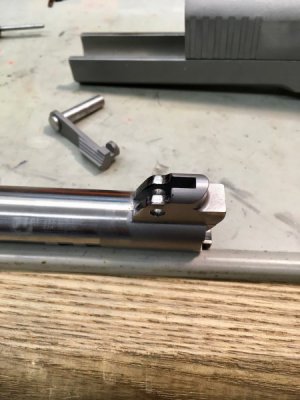
This thing will be WAY more accurate than I am capable of taking advantage of. But hey, when you're retired and playing in your garage/shop almost every day, what else are you going to do?

This is where I hang out when I'm not standing in front of my machines.
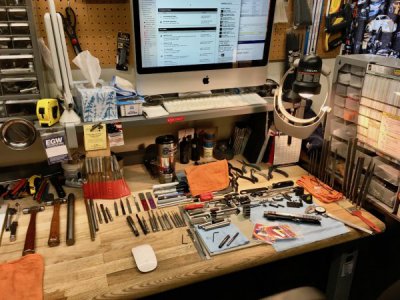
A couple more pics of my 'office'.
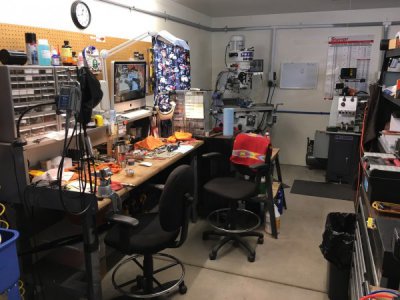
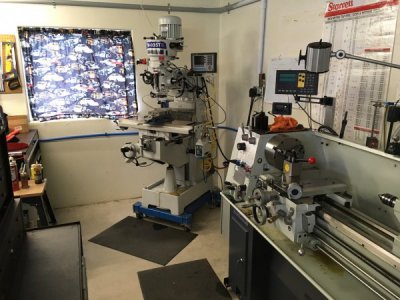
I can think of worst places to be...







